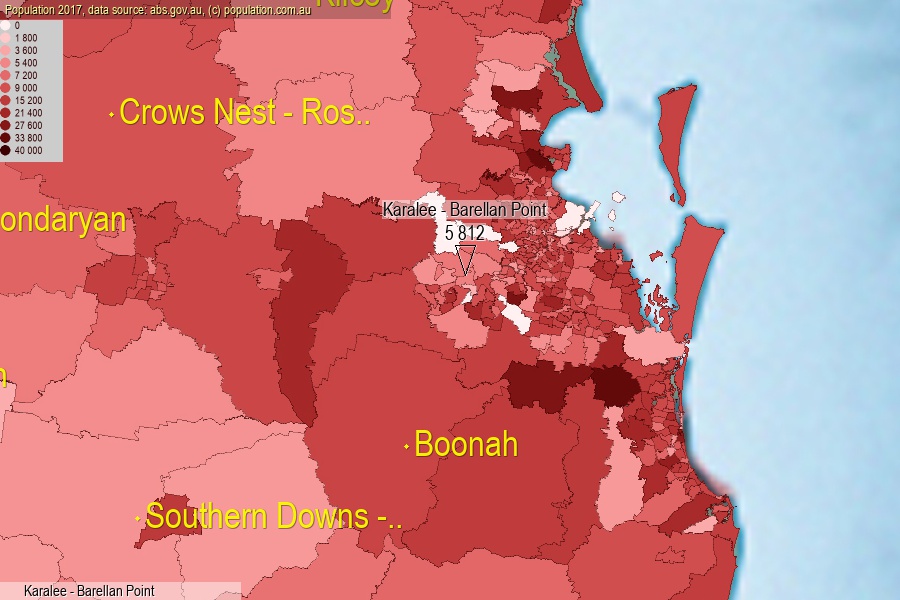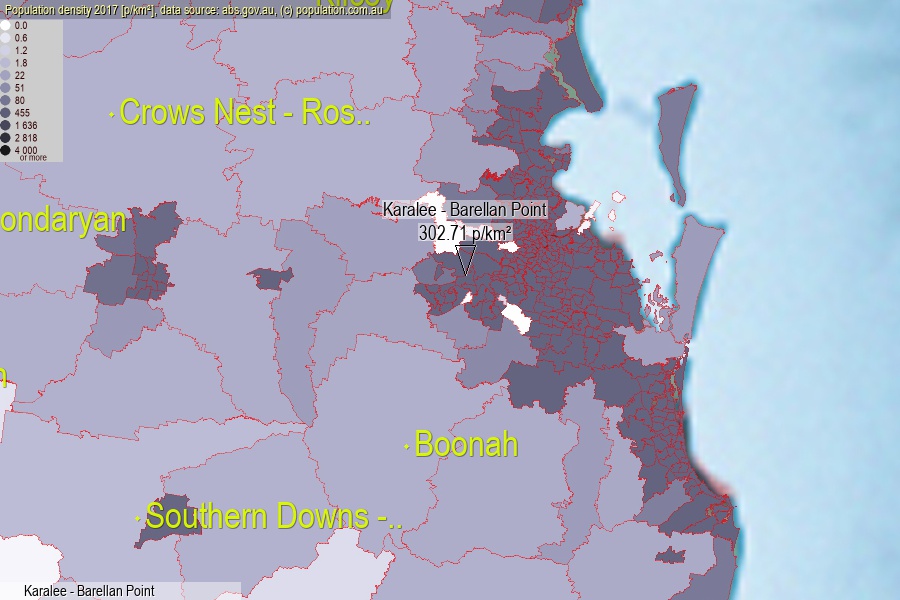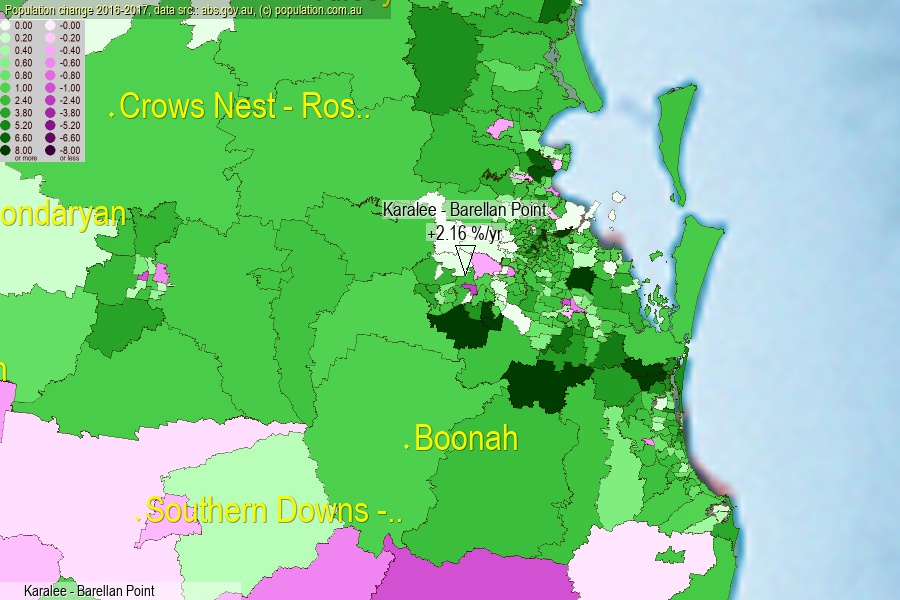 population.com.au
population.com.auLast official estimated population of Karalee - Barellan Point (as Statistical Area Level 2) was 5 812 people (on 2017-06-30)[2]. This was 0.02% of total Australian population and 0.116% of QLD population. Area of Karalee - Barellan Point is 19.20 km², in this year population density was 302.71 p/km² . If population growth rate would be same as in period 2016-2017 (+2.16%/yr), Karalee - Barellan Point population in 2025 would be 6 897. [0]



Click to enlarge. Karalee - Barellan Point is located in the center of the images.
Population [people], population density [p./km²] and population change [%/year] [2]
View borders » (new window) [4]
[1991-1992] +10.49 %/Yr.
[1992-1993] +13.23 %/Yr.
[1993-1994] +5.68 %/Yr.
[1994-1995] +2.97 %/Yr.
[1995-1996] +2.54 %/Yr.
[1996-1997] -0.58 %/Yr.
[1997-1998] -0.73 %/Yr.
[1998-1999] -0.39 %/Yr.
[1999-2000] -0.79 %/Yr.
[2000-2001] -0.12 %/Yr.
[2001-2002] +1.12 %/Yr.
[2002-2003] +3.57 %/Yr.
[2003-2004] +1.47 %/Yr.
[2004-2005] +2.18 %/Yr.
[2005-2006] +2.27 %/Yr.
[2006-2007] +2.42 %/Yr.
[2007-2008] +4.00 %/Yr.
[2008-2009] +2.74 %/Yr.
[2009-2010] +1.90 %/Yr.
[2010-2011] +0.18 %/Yr.
[2011-2012] +2.81 %/Yr.
[2012-2013] +3.26 %/Yr.
[2013-2014] +1.51 %/Yr.
[2014-2015] +1.79 %/Yr.
[2015-2016] +4.04 %/Yr.
[2016-2017] +2.16 %/Yr.
[0] Calculated with linear interpolation from officially estimated population
[1] Read more about SA2 and Australian Statistical Geography Standard (ASGS) on abs.gov.au
[2] Population data from Australian Bureau of Statistics (Population and density: 2017; change: 2016-2017)
[3] Digital Boundaries: Australian Statistical Geography Standard (ASGS) 2016.
[4] Border coordinates are simplifyed using Ramer-Douglas-Peucker algorithm.